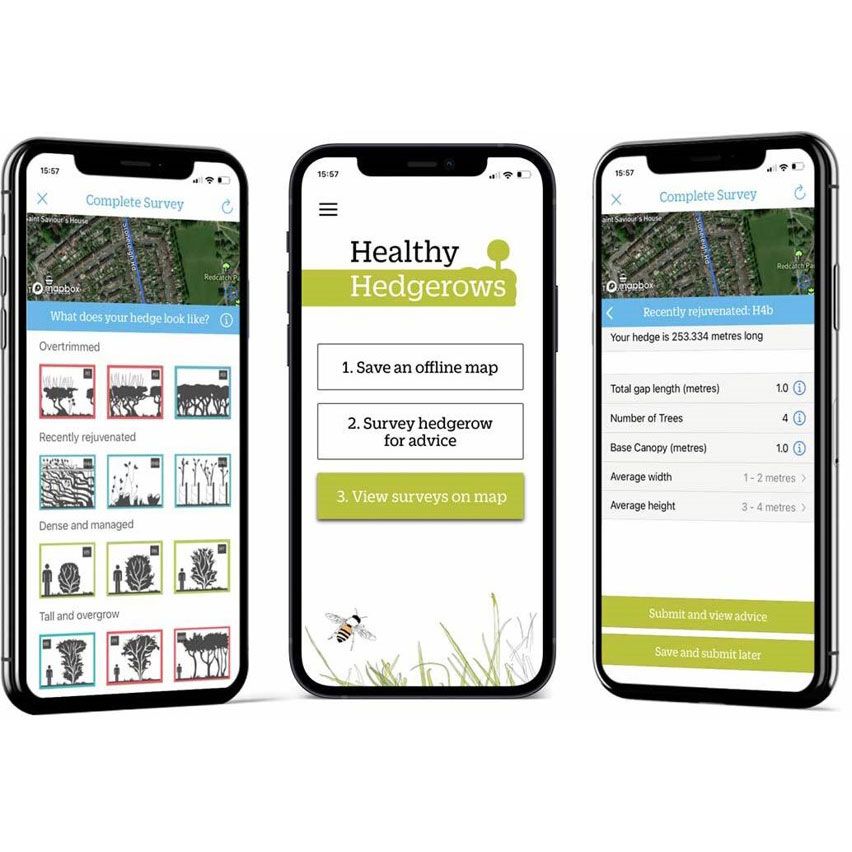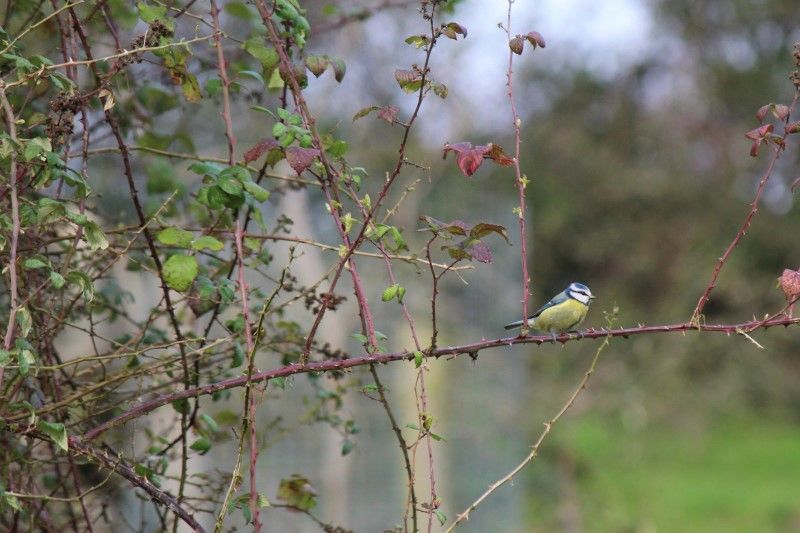Hedgerow wildlife

Hedgerows are teeming with life. One study counted 2070 species in an 85 metre stretch. This was thought to be an underestimate however, as many taxonomic groups were not thoroughly sampled.
Many books have been written about the wildlife that live, feed and travel in the hedgerows of the UK. The importance of our hedgerow network cannot be overstated, especially at a time of worrying wildlife decline. Amongst all the other benefits the humble hedge offers us, hedgerows provide three vital services for wildlife.
Benefits of the humble hedge
Hedgerows provide a physical home
Many creatures, including nesting birds, hibernating hedgehogs, dormice and other small mammals, as well as insects like beetles and butterflies, live in hedgerows. 70% of the UK’s landscape is farmland. Within this agriculturally-dominated landscape, hedgerows are one of the only remaining semi-natural habitats available. Consequently, many farmland species are now marginalised to hedgerows.
Hedgerows are an excellent complementary habitat
Hedgerows may not necessarily be home to some species but, can still contribute essential resources. For example, many species use hedgerows for food such as leaves, flowers, berries, insects or small mammals. Some species rely on hedgerows as shelter from predators or the elements whilst out foraging.
Hedgerows are a route of passage, connecting up the landscape
Hedgerows criss-cross the country, enabling wildlife to move about the landscape. They consequently connect populations that would otherwise be isolated and vulnerable. Bats use hedgerows as both feeding sites and flight paths for commuting between their roosts and other suitable foraging sites. Butterflies and other flying insects take advantage of the shelter hedges provide when in flight.
From the herbaceous vegetation at the bottom, to the woody shrubs that make up the structure and the trees, each element of a hedge supports wildlife in different ways. Find out more about each individual hedgerow structural component and their value to wildlife.
Wildlife supported by hedgerows
Over 500 plant species, 60 species of nesting bird, many hundreds of invertebrates and almost all of our native small mammal species have been recorded as being supported by hedgerows. Here are a couple of examples of the importance of hedgerows for different species. See also our dormice and hedgehog pages for information about the importance of hedgerows and how to manage them for these two iconic but endangered species.
Bats and hedgerows
Bats use hedgerows as feeding sites, exploiting the increased populations of flying insects. They also use them to travel from their roosts to other feeding sites. Especially for bats with limited echolocation ranges such as the Pipistrelle, having a network of well-connected hedgerows near their roosts is very important.
Hedgerows can break up wind speeds, which can be important in exposed areas. Without hedgerows, insects can struggle to fly on windy nights which reduces the amount of prey available for bats.
All the bat species that live in the UK are protected species. Our hedgerow network is important for their future survival.
Hedgerow trees can be valuable roost sites for some species of bat which can live in rot holes or in crevices in the bark. The loss of hedgerow trees and lack of new ones being allowed to emerge, will consequently have a detrimental impact on the bat species that call them home.
Birds and hedgerows
Hedgerows are hugely important for our native birds. They provide roosting, nesting and feeding opportunities that can otherwise be scarce in our agricultural landscape. As many as 16 of the 19 birds included in the Farmland Bird Index are associated with hedgerows, while 10 of these indicator species use hedgerows as a primary habitat. The Farmland Bird Index is used by Government to assess the state of farmland wildlife.
The number of bird species, as well as the number of individual birds tends to increase with the size of the hedge and the number of woody plant species that the hedgerow is made from. As shrubs flower and fruit at different times throughout the year, a greater variety reduces gaps in the food supply. Hawthorn and dog rose are particularly valuable shrubs for providing food that can last throughout winter.
The base of a hedge is really important for many nesting bird species. A dense hedge with good cover, especially in the lower 1m of the hedge, increases bird population sizes. Similarly, hedge height is important, with taller hedges generally supporting a greater bird diversity and more nesting pairs. This is possibly due to a reduction in the chance of predation.
Trees are used by birds as song-posts and territory markers. They also support a huge quantity of invertebrate life that contributes to the food supply of our insectivorous bird species.
Health-check your hedgerows

The Healthy Hedgerows survey provides instant feedback about the health of the hedge and bespoke management advice. The data that you contribute helps us to understand the overall health of hedgerows at a national scale so that we are able to direct our conservation work. Learn more:


